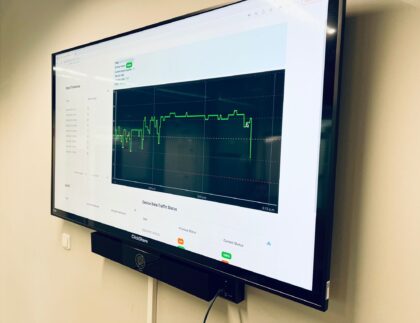The Rise of AI-Enhanced Cyber Threats
Artificial Intelligence is reshaping nearly every industry — but in cybersecurity, it’s creating both the weapon and the shield.
As AI tools become more powerful and accessible, threat actors are using them to launch faster, more convincing, and more scalable attacks. The result? A new era of AI-driven threats — and with it, the urgent need for AI-aware defenses.
We’re not facing the same attacks with different packaging. We’re dealing with entirely new threat models.
AI is being weaponized in ways that were barely imaginable five years ago. Here’s how:
1. AI-Generated Phishing & Social Engineering
Natural Language Processing (NLP) tools like ChatGPT and open-source LLMs can craft highly personalized, human-like phishing emails — complete with accurate grammar, tone, and even emotional hooks.
An AI can scrape a CEO’s social media and generate a convincing spear-phishing email in seconds.
2. Malware Obfuscation & Evasion
AI can be trained to modify malicious code on the fly to avoid detection by antivirus or EDR tools. Even traditional signature-based detection is being bypassed by polymorphic, AI-shaped malware.
3. Automated Vulnerability Discovery
Generative AI models can be trained on source code to identify bugs, backdoors, or weak configurations at scale. Threat actors are using these tools to discover 0-days faster than ever before.
4. Deepfakes & Voice Cloning
With AI-generated audio and video becoming indistinguishable from real people, we’re seeing a rise in CEO fraud, fake Zoom calls, and voice-based account takeovers.
⚔️ Why AI-Aware Defenses Are the Next Frontier
Just as attackers are using AI, defenders must adapt. That means going beyond traditional detection methods and developing AI-aware security strategies.
Here’s what that looks like:
✅ 1. LLM-Specific Threat Modeling
Security teams must build new threat models that include prompt injection, data leakage via chat interfaces, and misuse of AI agents.
If your app uses an LLM, it's not just a feature — it’s an attack surface.
✅ 2. AI Behavior Monitoring
Instead of just scanning logs, defenders will need tools that understand the context and flow of AI-generated output. This includes monitoring for hallucinations, toxic outputs, or anomalous API behavior.
✅ 3. Data Provenance and Integrity
In an AI-heavy environment, data pipelines are a key risk. Secure organizations must verify what data AI models are trained on, where it came from, and who touched it.
✅ 4. Prompt Security & Guardrails
We’re entering an era where prompt security is as important as input validation. Prompt injection testing and context boundary enforcement will become core tasks for security engineers.
💼 What This Means for Security Providers and Teams
This shift creates massive opportunities for cybersecurity professionals who can adapt:
-
Penetration Testers – Learn to test LLM apps for prompt injection, training data exposure, and insecure integrations.
-
Blue Teams – Build detections for abnormal AI output, API abuse, and synthetic content generation.
-
CISOs & Consultants – Advise orgs on AI-specific risk frameworks and governance models.
-
Startups & Vendors – Deliver AI-aware tooling, from prompt firewalls to behavior analytics.
AI in security isn’t just about using ChatGPT to write scripts. It’s about defending against a fundamentally different kind of adversary.
🔮 Looking Ahead
The AI arms race has only just begun. In the next few years, we’ll likely see:
-
Autonomous AI-based malware capable of lateral movement and privilege escalation
-
Synthetic identity fraud at scale using deepfakes and AI-generated credentials
-
AI-powered reconnaissance bots that map attack surfaces faster than any human could
The defenders who thrive will be those who treat AI not just as a tool — but as a threat actor and an attack vector.
⚠️ Final Thought: Prepare or Be Outsmarted
AI is no longer a future risk — it’s a current force multiplier for cybercriminals. The response can't be passive.
We must:
-
Build AI-aware defenses
-
Train teams on AI threat models
-
Update tools and processes for a new breed of attacks
Because if we don’t adapt now, AI won’t just assist attackers.
It will outsmart us.


